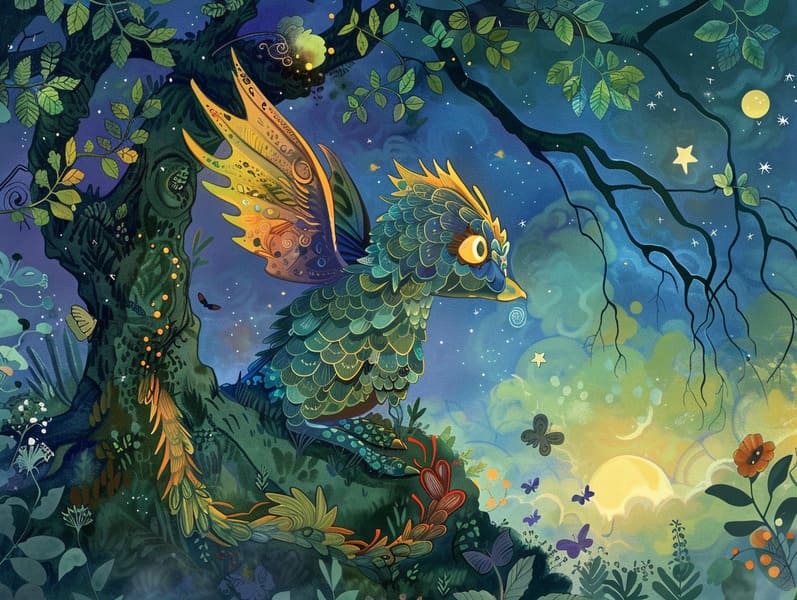The Formation of Vintage Fairy Tales with Their Lasting Loveliness.
The Formation of Vintage Fairy Tales with Their Lasting Loveliness.
Blog Article

Vintage fairy tales have long histories. These stories have been whispered from one generation to the next far before they were ever written down. They emerged from a variety of traditions, including Indigenous traditions. They were initially transmitted among mature audiences, often carrying themes and messages pertaining to the societal norms and beliefs of the time.
The Brothers Grimm, Jacob and Wilhelm Grimm, were among the first to gather and publish many of these beloved fairy tales. Their anthology, "Grimm's Fairy Stories," included stories like "The Story of Cinderella," "Little Brother and Little Sister," and "The True Story of Snow White," which have since become cornerstones in the world of classic fairy tales. Similarly, Andersen's charming stories, such as "The Little Mermaid," and "The Duckling's Story," have captivated hearts worldwide, guaranteeing their place in the pantheon of famous fairy tales.
Though they are centuries old, fairy tales remain as applicable as ever, especially as nighttime stories for kids. These enchanting tales are now available in multiple formats, including beautifully illustrated books, enchanting animations, and digital storybooks.
Their continued relevance can be ascribed to several delightful features:
Valuable Lessons: Traditional fairy tales often present important moral lessons. Narratives like "The Tale of the Boy Who Cried Wolf" teach the importance of truth, while "The Tortoise and the Hare" emphasize the traits of perseverance and modesty. These narratives offer the young clear distinctions between moral and immoral, developing their moral compass in a gentle yet meaningful way.
Empathy and Awareness: Timeless fairy tales frequently showcase characters facing difficulties and adversities, provoking young listeners to feel with their struggles and boost their triumphs. For instance, "Beauty's Beast" reveals the importance of seeing inner beauty to acknowledge the real character of a person, fostering insight and awareness.
Cultural Awareness: Many traditional fairy tales are interwoven with the cultural contexts from which they grew. Immersing in these fairy tales can provide fascinating glimpses into different beliefs, cultivating a sense of global appreciation and recognition.
Imagination and Creativity: The extraordinary elements in fairy tales—talking beasts—unleash children’s imaginative ideas. These fairy tales carry readers to fantasy realms, generating fantasy dreams and a sense of awe that remains a lifetime.
Timeless fairy tales are not only enchanting but also enlightening. They work as delightful tools in nurturing various intellectual and emotional capacities in the young. When traditional fairy tales are voiced, they develop verbal development by bringing new linguistic elements and detailed sentence structures. This practice also advances listening skills and concentration, as young readers remain attentive, looking forward to see what happens next.
Furthermore, conversing about the themes and characters of fairy tales can strengthen evaluative skills and critical thinking. Children are taught to find patterns, forecast, and realize cause and effect. These discussions also encourage young readers speak out their thoughts and feelings, adding to their emotional intelligence.
In today’s electronic age, the abundance of web-based fairy tales has made these tales more acquirable than ever. Web-based platforms and mobile apps feature wide arrays of Grimm's fairy tales that can be browsed or listened to anytime, anywhere. Fairy tales recited are particularly popular, providing an enjoyable way for the young to experience these charming tales. Audio stories and narrated videos take characters and settings to life, often joined by entrancing background sounds and songs that improve the tale journey.
The everlasting appeal of ancient fairy tales lies in their ability to change to contemporary times while staying true to their core messages. Contemporary reimaginings of these stories often present more inclusive protagonists and modern settings, making them relevant to today’s audience. However, the central morals of fortitude, benevolence, and justness remain unchanged, continuing to move listeners of all ages.
Fairy tales also offer a sense of peace and predictability. They bring a well-structured narrative with a definite beginning, middle, and end, often finishing with the ending of conflicts and the triumph of goodness over badness. This assuredness can be calming for little ones, allowing a sense of steadfastness in an shifting world.
Ancient fairy tales continue to delight and instruct new generations, maintaining their majesty and relevance in modern society. As nighttime stories for kids, they put forth a perfect blend of charm and understanding, fostering moral values, empathy, and creativity. The presence of digital fairy tales and the widespread nature of fairy tales read out loud assure that these classic stories remain reachable to new generations.
By protecting and passing on these tales, we continue to acknowledge the rich tapestry of creativity and cultural heritage. Whether you are seeing a vibrantly illustrated book, seeing a web collection, or listening on an audio story, the fascination of children's fairy tales is always within reach. These fairy tales point out of the ageless essence of fairy tales and its ability to unite us across epochs and places.
Even if you are experiencing a richly illustrated website book, viewing a web-based library, or hearing an spoken story, the fascination of children's fairy tales is always within reach.
These narratives demonstrate of the persistent impact of narratives and its ability to draw us together across centuries and lands, forming a connection that enchants and educates alike.